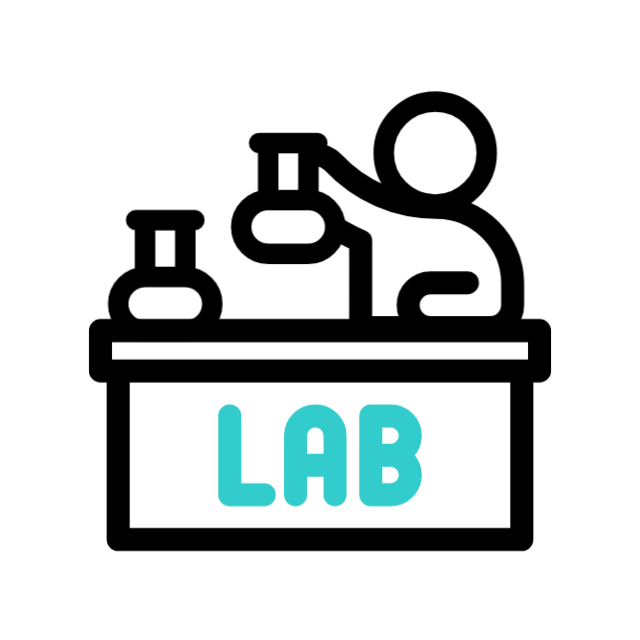In today’s fast-paced digital world, maintaining a cohesive and consistent brand identity is paramount. From logos and typography to colours and user interface elements, every design decision shapes how a brand is perceived by its audience. As technology continues to advance, especially in the realm of Artificial Intelligence (AI), the landscape of brand design is evolving rapidly. One key tool that businesses are increasingly relying on to future-proof their design processes is design tokens. These tokens are critical for ensuring consistency and scalability across digital assets.
This article will delve into why businesses must prepare for the future of brand design through AI, the role design tokens will play, the importance of robust brand guidelines, and the potential risks of failing to invest in design systems at this critical juncture.
Why Businesses Must Prepare for the Future of Brand Design Through AI
The digital environment is becoming more complex by the day. Businesses must adapt to new platforms, devices, and user expectations, and Artificial Intelligence (AI) is poised to be a game changer in this process. From personalisation to real-time adaptation, AI offers opportunities to create hyper-tailored user experiences that were previously impossible. However, for AI to create designs that align with a brand’s core identity, it needs a reliable system that defines and standardises key design elements. This is where brand guidelines and design tokens come in.
AI can streamline brand creation, ensuring that design elements remain consistent across platforms and touchpoints. But without these key components, AI-powered design tools would lack the structure needed to preserve the brand’s integrity. This means that businesses need to start planning and structuring their brand systems today to prepare for AI-driven design tomorrow.
1. Personalisation at Scale
Consumers today expect personalised experiences, and AI is well-suited to meet these demands. By using AI, brands can dynamically generate content tailored to individual users, such as personalised product recommendations or targeted advertisements. However, for this personalisation to remain cohesive with the brand, it must use pre-defined design standards.
Design tokens are the backbone of AI-driven personalisation, ensuring that all user-specific content adheres to the same design system, whether it’s on a website, mobile app, or social media campaign. Without clear design tokens, AI tools would risk personalising content in ways that stray from the established brand identity, which could confuse users and erode brand trust.
For instance, Spotify provides a personalised music experience based on user preferences. Despite these personalisations, the platform uses the same design tokens (colours, typography, logos) to ensure that the brand is represented consistently across various personalised elements.
2. Real-Time Adaptation Across Multiple Touchpoints
The digital landscape is changing rapidly, and users interact with brands across an increasing number of devices and platforms. Whether it’s desktop websites, mobile apps, smartwatches, or voice interfaces, AI can help brands stay agile and adapt in real-time to provide optimal user experiences.
Design tokens play a crucial role in enabling this adaptability. They allow AI to adjust design elements—like colour schemes, typography, and spacing—based on the platform or context, without losing the overall brand identity. For example, when a user switches from dark mode to light mode, design tokens allow AI to seamlessly adjust visual elements while ensuring consistency with the brand guidelines.
Without a well-structured design system, AI would struggle to apply consistent visual elements across various devices, leading to fragmented brand experiences. Apple, for example, uses design tokens in their Human Interface Guidelines, which help ensure consistency across a wide range of devices, including iPhones, iPads, and Macs. Failing to set up a similar system could result in inconsistencies that damage brand perception.
3. Efficiency in Scaling Design Operations
As companies grow, so do their design needs. Scaling up involves adapting the brand to new markets, products, or platforms while maintaining visual consistency. AI can significantly accelerate this process, but only if the brand’s visual identity is structured and modular. Design tokens are an essential component in this regard, as they allow for scalable design systems that can be easily reused across a range of projects.
Without design tokens, designers and developers would need to repeatedly code and implement design elements, increasing time spent on each project and leaving room for human error. Material Design by Google is an example of an AI-driven design system that uses design tokens to ensure that its UI components remain consistent across all of its products, reducing redundancy and maintaining a unified design language across diverse platforms.
The Role of Design Tokens in AI-Driven Brand Design
Design tokens are more than just tools for designers; they are essential for ensuring consistency, scalability, and adaptability in AI-driven brand design systems. Here’s why they are crucial for the future of brand design:
1. Consistency Across Platforms
Design tokens allow businesses to maintain a consistent visual identity across a growing number of platforms. AI tools can use these tokens to automatically apply design elements like colours, typography, and spacing to various digital touchpoints, ensuring that no matter where a user encounters the brand, they experience the same cohesive identity.
For example, Nike’s design guidelines are heavily influenced by tokens that ensure every element of their design, from their website to their mobile app, adheres to the same standards. If Nike were to launch a new digital product, the brand’s tokens would ensure that the visual design stays consistent with their established look and feel.
Without design tokens, each new digital product or service could have its own visual identity, leading to confusion and a weakened brand presence.
2. Real-Time Adaptation
As discussed earlier, one of the greatest benefits of AI in brand design is its ability to adapt in real-time based on contextual factors, such as user preferences, device type, or platform. Design tokens allow AI to do this while maintaining the integrity of the brand identity.
For example, Airbnb has created a scalable design system using design tokens that adjusts based on the user’s device, language, and location. This means that whether users are browsing listings on a desktop or mobile device, or whether they are using the site in English or Spanish, the brand’s identity remains consistent and visually appealing.
If design tokens were not used, AI would struggle to automatically adjust visual elements to suit different platforms, leading to a fragmented user experience and loss of brand integrity.
3. Faster Prototyping and Iteration
AI-driven design systems, when paired with design tokens, enable designers to quickly test and iterate on various visual elements. Whether changing the colour of a button or adjusting the typography for readability, design tokens allow these tweaks to be made without sacrificing consistency. AI systems can automatically apply these changes across the entire design, making prototyping faster and more efficient.
Adobe XD is an example of a tool that incorporates AI and design tokens to help designers iterate faster while maintaining brand guidelines. The AI tools embedded within Adobe XD can instantly apply updates across various screens and platforms, allowing for rapid prototyping without losing the visual identity.
Why Businesses Should Use Design Tokens
Businesses that invest in design tokens will reap long-term benefits in efficiency, scalability, and brand consistency. Here’s why they should be a priority for any organisation looking to build a future-proof design system:
1. Brand Consistency at Scale
As businesses expand, so do the number of digital touchpoints. Whether launching new products, entering new markets, or creating new campaigns, the brand must remain consistent across all these interactions. Design tokens allow businesses to maintain this consistency, even as the scope of their design needs grows.
For instance, McDonald’s has used design tokens to ensure their brand identity remains consistent across their digital and physical assets, from app interfaces to restaurant signage. This consistency is critical to ensuring that customers recognise the brand no matter where they encounter it.
2. Improved Cross-Departmental Collaboration
Design tokens are not only beneficial for designers but for marketers, product managers, and developers as well. With a centralised set of tokens, all teams can work from the same design system, ensuring that assets across marketing materials, digital products, and customer service experiences align with the brand’s guidelines.
3. Future-Proofing Design Operations
Investing in design tokens is also an investment in future-proofing your brand’s design system. As AI tools become more sophisticated and platforms evolve, design tokens provide the flexibility needed to adapt to new technologies and digital environments.
The Implications of Failing to Invest in Brand Guidelines and Design Tokens
Not investing in brand guidelines and design tokens today comes with serious risks:
1. Inconsistent Brand Identity
Without design tokens, teams are left to their own devices, which can result in fragmented and inconsistent brand experiences across different channels and platforms. This fragmentation can confuse customers and damage the brand’s reputation.
2. Inefficiency and Increased Costs
Without a centralised design system, teams will waste time creating and implementing design elements from scratch for each project. This inefficiency leads to wasted resources, increased costs, and longer project timelines.
3. Challenges in Scaling
As businesses grow, they will face the challenge of scaling their brand to new products and platforms. Without design tokens and guidelines, ensuring consistency across these new touchpoints becomes increasingly difficult, leading to disjointed customer experiences.
4. Missed Opportunities in AI-Driven Design
Businesses that fail to prepare their design systems will miss out on the opportunities that AI offers. AI can only be effective in brand design if the foundational design elements are in place. Without a comprehensive design system, AI tools will struggle to maintain brand consistency across multiple platforms, limiting the benefits of automation and personalisation.
Conclusion
Preparing for the future of brand design requires a forward-thinking approach. With AI poised to play an increasing role in personalisation, real-time adaptation, and scalability, businesses must invest in robust design systems today. Design tokens and brand guidelines form the backbone of this effort, enabling brands to maintain a consistent, adaptable, and efficient visual identity across all touchpoints. Failing to invest in these foundational elements will lead to inefficiencies, fragmented brand experiences, and missed opportunities in the rapidly evolving digital landscape. The time to act is now—businesses that prepare today will be best positioned to thrive in the AI-powered future of brand design.
Find out about our Standard Brand Guideline design service here.









